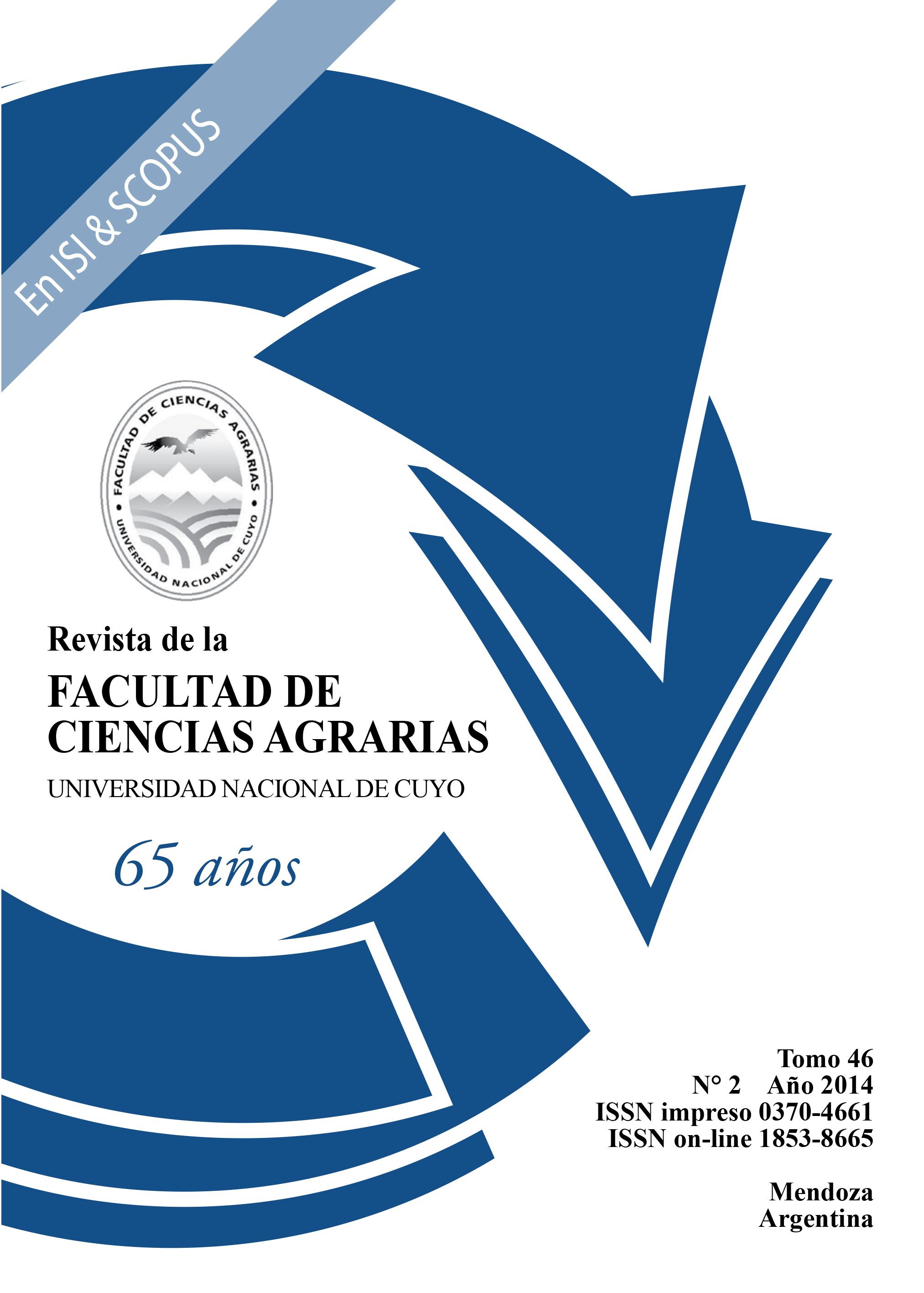Preliminary studies of lethal and sub-lethal effects of ethanolic extracts of four xerophytic species of high Andes of Chilean against Tetranychus cinnabarinus (Acarina: Tetranychidae)
Keywords:
Acaricides, median lethal concentration, andean plants, repellency, susceptibility, toxicityAbstract
Lethal and sublethal effects of ethanolic extracts of four original plants of the high Andes of Chilean desert (Baccharis tola Phil., Fabiana densa J. Remy, Lampayo medicinalis F. Phil. and Azorella compacta Phil.) were studied at 26 ± 2°C and 70 ± 10% of RH with a photoperiod of 16:8 h (L:D) on adults and eggs of Tetranychus cinnabarinus (Boisduval) (Acari: Tetranychidae). The highest mortalities of adults by contact were obtained with A. compacta (10% w/v), L. medicinalis (10% (w/v) and A. compacta (7.5% w/v) which no showed significant differences (p< 0.05) compared with the control treatment (spirodiclofen). The lowest LC50 was obtained by F. densa (0.71% w/v), followed by L. medicinalis (0.98% w/v). Azorella compacta (5.10% w/v) showed the lowest LC90 and the highest efficiency with a coefficient of 3.21 (CL90/ CL50). Lampayo medicinalis (10% w/v) produced the highest percentage of unhatched eggs with 73.15%. Bacharis tola (7% w/v) exhibited the highest toxicity by residual effect with a mortality of 57.8% of T. cinnabarinus adults. Fabiana densa maintained its repellent effect for 72 hours. Lampayo medicinalis, B. tola and A. compact slightly lost their repellent activity over time.
Downloads
Published
Issue
Section
License

This work is licensed under a Creative Commons Attribution-NonCommercial-ShareAlike 3.0 Unported License.
Aquellos autores/as que tengan publicaciones con esta revista, aceptan las Políticas Editoriales.



